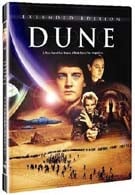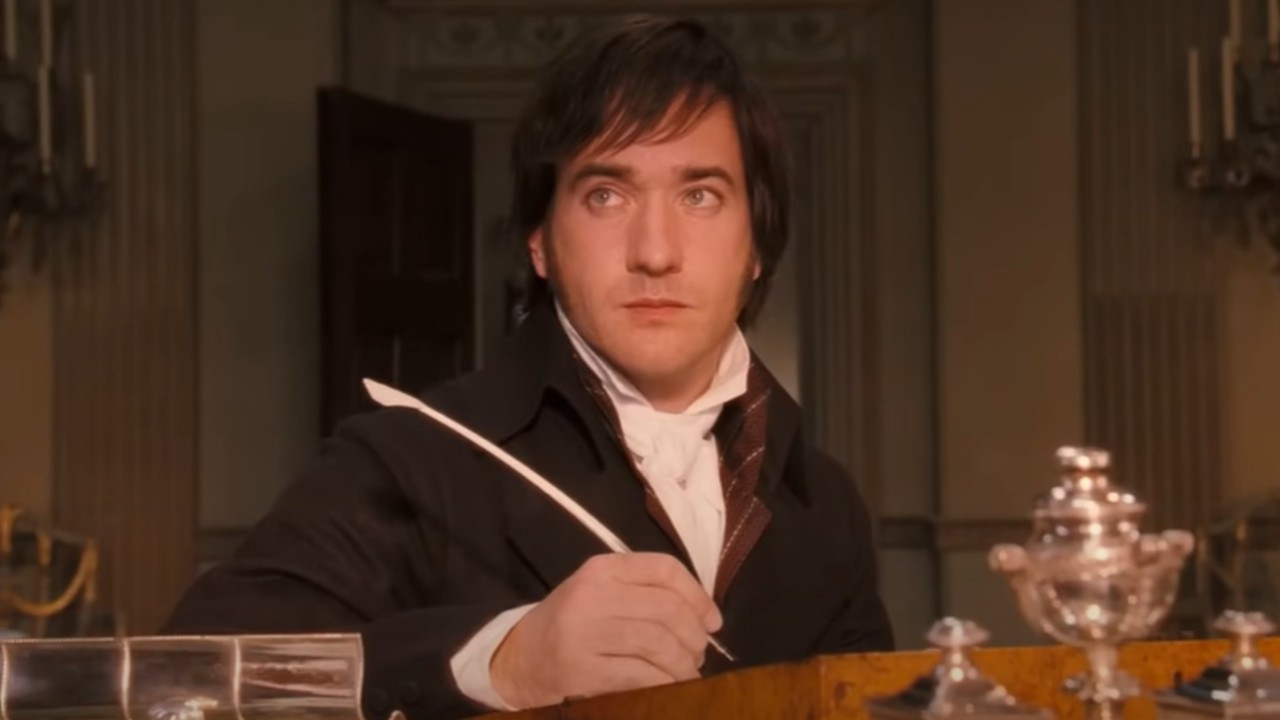The book is modern literature legend. The movie is something of a legend as well, but on an entirely different level. For some it is a jewel in the crown of science-fiction filmmaking. To others it’s a laughable B grade film gorged on an A grade budget. No matter where you fall on the spectrum there’s no denying the movie’s epic effort, embattled history, or its place in sci-fi film halls of fame. I’ll say it up front: I am a big fan of Dune. Of course, I’m not above admitting that it has some serious flaws. It’s inevitable when trying to cram a screen story worthy of no less than a trilogy into a single movie. Whether you’re watching the original theatrical release or the extended version which was circulated sometime later, you can’t help but be impressed by the vast storyline. At the same time it’s hard to shake the feeling that there has to be a better way for the story to be told.
“Know then, that is the year 10191,” begins the prologue. The universe is a very different place. The various planets across the expanse have been brought together by an incredible substance known commonly as spice. Its mythic and addicting qualities give people the ability to live inordinately long periods of time and develop incredible psychic and super-physical powers. The only catch is that the spice only exists on a single planet in the universe, a desolate desert world known as Arrakis.
All the planets of the universe are gathered together under a type of feudal system and ruled by a single Emperor. The fragility of the archaic future government surfaces when the Emperor launches a plan to rid himself of his greatest political opponent, Duke Leto Atreides. His scheme pits the House Atreides against their mortal enemies of House Harkonnen in a war over control of Arrakis. It becomes apparent that the plot will put production of the spice in jeopardy and all the most powerful factions of the universe begin positioning themselves to do whatever is necessary to protect the focus of their addiction. Little do they realize the incredible force they are about to unwittingly unleash. And that’s only the beginning of the story.
Frank Herbert’s original Dune novel is one of the greatest pieces of 20th century literature and not just as a work of science fiction. Sure it’s full of cool stuff like advanced space travel and mysterious peoples conquering the world on the backs of giant worms, but it’s also an intensely vivid adventure into what the human mind could be like in 8000 years. It is intricate, epic and just too much to try to cram into a single movie. Try as they may, the filmmakers just couldn’t pull it off.
Lynch gathered together quite a group of actors for his epic, ranging from José Ferrer and Dean Stockwell to Sean Young and Sting. He even cast Patrick Stewart before most of the world knew who the heck Patrick Stewart was. Besides looking really cool in their costumes (Sting’s blue metallic underwear excluded) they give a striking ensemble performance despite the often stilted writing. If you think the cast of Star Wars had it rough, try saying “Usul has called a big one” with a straight face.
When your plot spans four planets and several civilizations you obviously have a lot of design work to do and that’s where director David Lynch and his crew got things right. Until Peter Jackson came along and literally built Middle Earth from the Shire up, Dune stood unchallenged as the most detailed, breathtaking construction of a fictional universe. The visual effects are awkward at times (especially those darn worms), even for a movie made in pre-CG 1984. Still, the sets, costumes, props and makeup are magnificent and completely worthy of Herbert’s vision.
Is the movie damaged creative goods? Yes. Is it still an astounding epic achievement? Absolutely! Will I blame you if you hate it and laugh your way through it? Probably not, so long as at the end of film we can both agree it was a tremendous effort with a stunning design. And if you want to bring up Sting’s blue metallic underwear I’ll probably laugh right along with you. According to urban legend there are numerous versions of Dune floating around. It’s arguably the only movie that’s suffered more tampering than the original Star Wars Trilogy (yes, Lucas, I’m still bitter). In truth, there are only two official versions. The first was the one David Lynch sent into theaters in 1984. The second one was a re-edit, the result of studio tampering. It was so bad that Lynch disavowed it completely and had his name removed from the credits. Both versions are available in the latest DVD release.
Lynch originally produced enough material to make a four hour long movie, though that would never have flown in theaters. Not even Peter Jackson has found a way to keep us contentedly in our seats for much longer than three. Lynch’s original version, which comes in at a tidy 137 minutes, is by far the more coherent of the two yet still disjointed by the sheer quantity of story telling he tries to cram in.
The extended version rolls in at a hefty three hours and takes a much broader view of the Dune universe. Unfortunately most of that added footage is a camera panning across mediocre concept art with a sleepy, out-of-sync voiceover narration. It’s nice to see some of extra footage that Lynch’s version left out, but the overall product is poorly conceived, shoddily constructed, and I don’t blame David for disassociating himself from it completely.
The ideal situation would have been to invite Lynch back and let him have another go at recomposing his vision. The magic of DVD has granted us the ability to hit the pause button and The Return of The King has already prepped us for excessively long viewing experiences. Remember, there’s a whole lot of unused shots out there that could be incorporated and for once I wouldn’t mind a director meddling just a little bit to sharpen up some of his visual effects.
The disc package is a mixed bag of disappointment and excitement. The case is a classy metal-plastic hybrid with a gorgeous cover design. Inside I was honestly expecting to find two discs. Instead, to save that extra forty-three cents an extra disc would have cost, Universal has crammed both sides of one disc with two versions of the film and a half hour worth of bonus features. Cheap, cheap, cheap.
The extra material is just plain fun to watch because the people being interviewed twenty years after the film’s release are wonderfully honest. At one point a sweet, little old British lady who had served as a production coordinator gets a pained look on her face and despairs, “That blasted worm. We’re not going to talk about worms are we?” I had to pause the feature to laugh.
The featurettes are a treasure trove of fantastic details. Among them is the revelation that Sting’s infamous steam shower sequence was originally intended as a nude scene and he was completely agreeable and up to the task. At the last second the producers got nervous and ordered some kind of costume piece. The now iconic Captain America g-string was thrown together the night before the shoot. It’s also fantastic to see the lengths to which the artists went in creating the visual and model effects. CG has spoiled us rotten. These folks were truly masters of their craft.
Painfully absent are any cast or director interviews. Everyone in the features was a member of the technical or design teams. Kyle MacLachlan and Sean Young couldn’t be that busy and surely Sting could have torn himself away from his yoga long enough to do a quick interview. I certainly don’t blame Lynch for not showing up, though if he were invited it would have been awfully nice and big of him to step up to the plate and share a few words.
The Andor Season 2 Panel With Diego Luna At Star Wars Celebration Japan 2025 - Live Blog
Wendy’s Finally Responded After Someone Called Them Out For Dragging Katy Perry Over Her Space Flight (But Didn’t Apologize)
Pride And Prejudice’s Director Shared The Story Behind Mr. Darcy’s Iconic Hand Flex Scene, And I’m Swooning All Over Again











